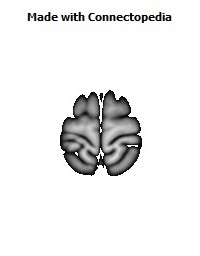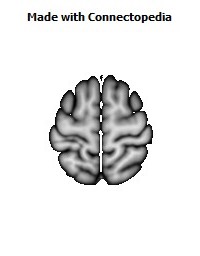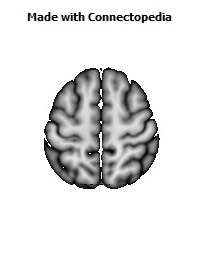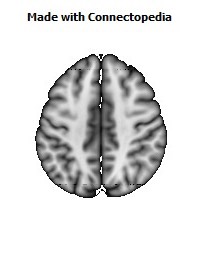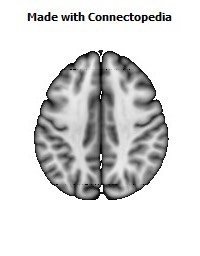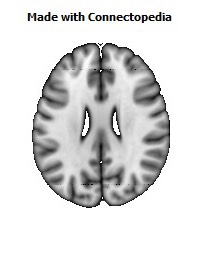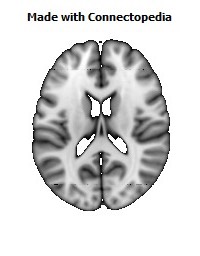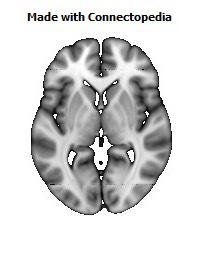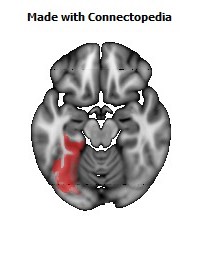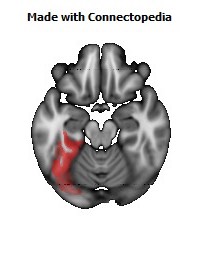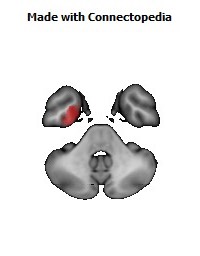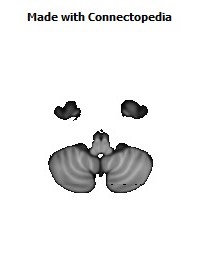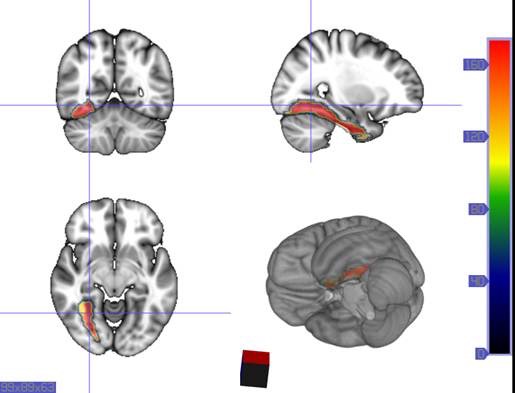
The fusiform gyrus is part of the temporal lobe and occipital lobe in Brodmann area 37. It is also known as the (discontinuous) occipitotemporal gyrus. The fusiform gyrus is located between the inferior temporal gyrus and the parahippocampal gyrus. The lateral and medial portions are separated by the shallow mid-fusiform sulcus.
Function
There is still some dispute over the functionalities of this area, but there is relative consensus on the following:
• processing of color information
• face and body recognition (see Fusiform face area)
• word recognition (see Visual word form area)
• within-category identification
Some researchers think that the fusiform gyrus may be related to the disorder known as prosopagnosia, or face blindness. Research has also shown that the fusiform face area, the area within the fusiform gyrus, is heavily involved in face perception but only to any generic within-category identification that is shown to be one of the functions of the fusiform gyrus. Abnormalities of the fusiform gyrus have also been linked to Williams syndrome. Fusiform gyrus has also been involved in the perception of emotions in facial stimuli. However, individuals with autism show little to no activation in the fusiform gyrus in response to seeing a human face.
Increased neurophysiological activity in the fusiform face area may produce hallucinations of faces, whether realistic or cartoonesque, as seen in Charles Bonnet syndrome, hypnagogic hallucinations, peduncular hallucinations, or drug-induced hallucinations.
Recent research has seen activation of the fusiform gyrus during subjective grapheme-color perception in people with synaesthesia.
After further research by scientists at MIT, it was concluded that both the left and right fusiform gyrus played different roles from one another, but were subsequently interlinked. The left fusiform gyrus plays the role of recognizing "face-like" features in objects that may or may not be actual faces. Whereas the right fusiform gyrus plays the role in determining whether or not the recognized "face-like" feature is, in fact, an actual face.





